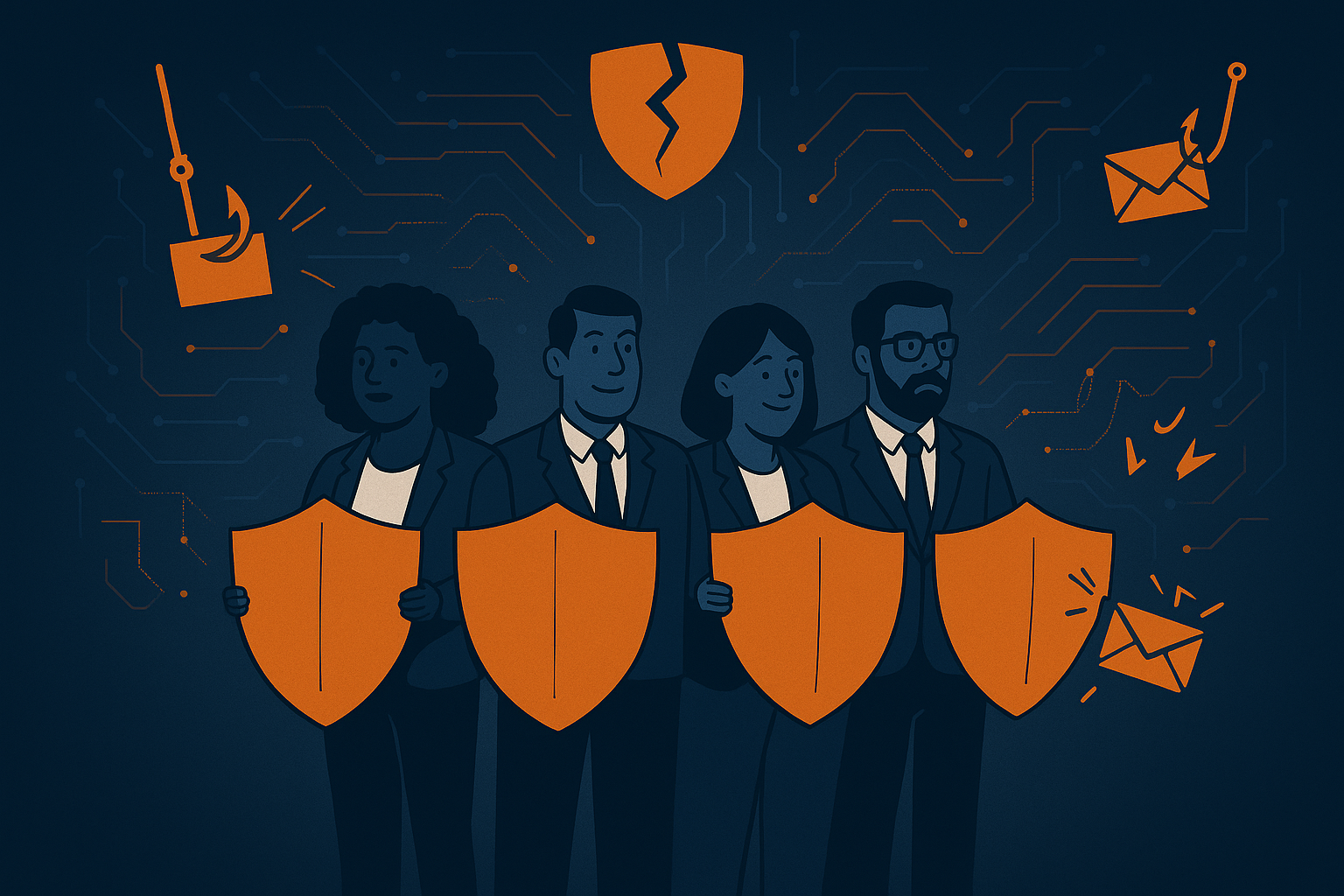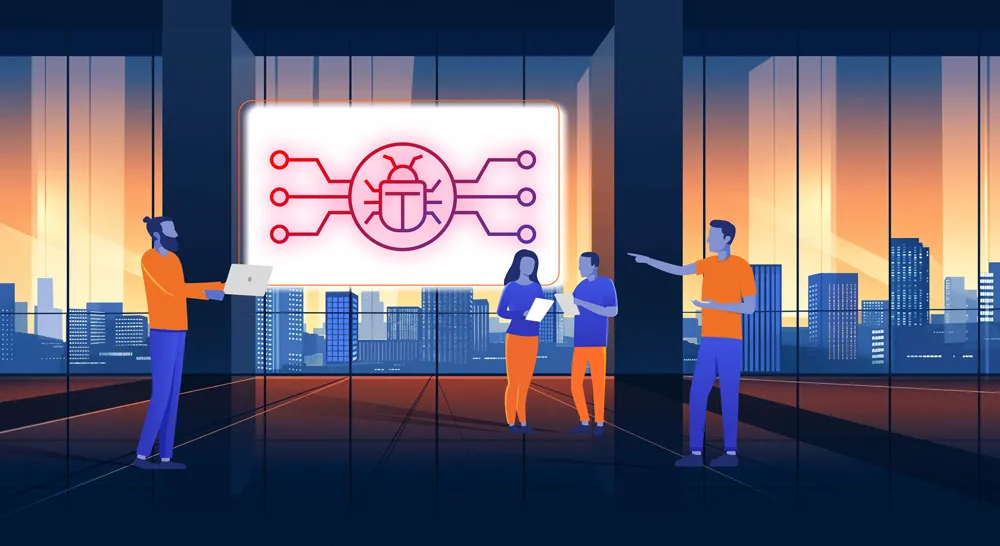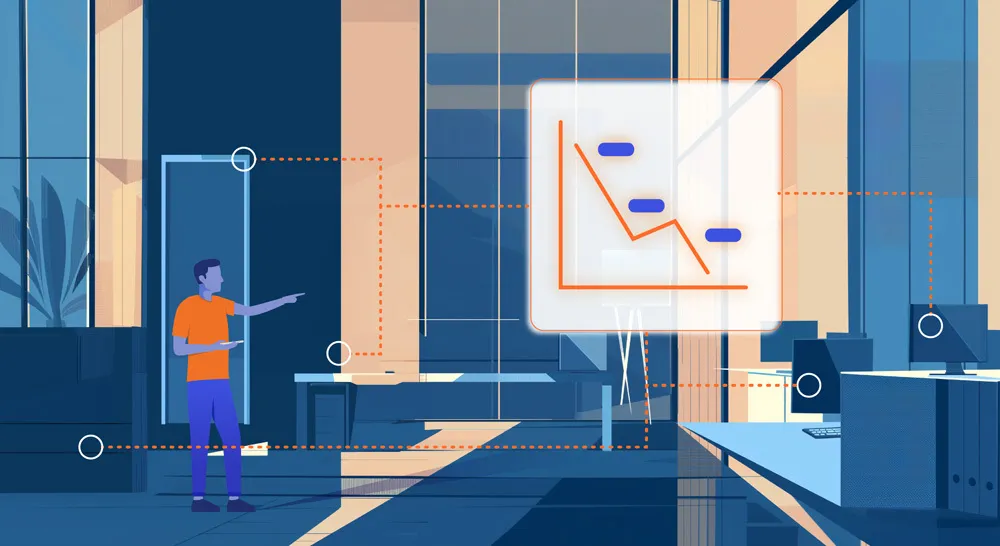
Navigating the Aftermath: Understanding Power Vacuums in Cybercrime and Criminal Networks
When law enforcement successfully takes down a threat actor or criminal network, a power vacuum often emerges, creating new challenges and risks within the criminal ecosystem. We must consider that the removal of a criminal group, a necessary measure in fighting crime, does not in itself eliminate the opportunity that created said groups.
The creation of a power vacuum is the result of the sudden removal of a key figure or group, leading to instability and competition among remaining or emerging actors. Whether in the context of organized crime or cybercrime, power vacuums can lead to unintended consequences that law enforcement and policymakers must be prepared to address. Understanding how power vacuums form, and their broader implications, is crucial to crafting more effective strategies for both immediate and long-term crime prevention.
What is a Power Vacuum?
A power vacuum occurs when a dominant player in a criminal network is removed, leaving a void in leadership, control, or influence. Criminal groups—whether physical or digital—often operate in structured hierarchies or decentralized systems. Key actors within these systems wield significant control over operations, resources, and networks. When they are neutralized through arrests or targeted disruption, the system temporarily loses its central coordination, creating an opportunity for new or rival actors to assert dominance.
Consequences of a Power Vacuum
The consequences of a power vacuum vary depending on the type of criminal activity and the structure of the network that is disrupted. However, several common outcomes can be observed:
- Fragmentation and Turf Wars: In traditional organized crime, the removal of a dominant group can lead to fragmentation, where splinter factions form and engage in turf wars for control over resources, territories, or criminal enterprises. The same pattern can be seen in cybercrime when major ransomware groups or hacking collectives are dismantled. Rival hackers, cybercriminal gangs, or new opportunists often attempt to fill the void, leading to increased cyber activity as new actors test their strength and abilities. This can cause a temporary spike in cyberattacks as new players compete for dominance in the criminal marketplace.
- Re-emergence of New Threat Actors: The fall of a large-scale criminal entity does not eliminate the opportunities that made it successful. When a prominent cybercriminal organization is taken down, smaller or more agile groups often move in to seize the opportunity. These actors may be less predictable, leveraging new techniques and exploiting different vulnerabilities. In some cases, the dismantling of one threat actor can lead to the rise of more dangerous and innovative criminals who learn from the mistakes of their predecessors.
- Escalation of Violence or Aggression: In the physical world, power vacuums in criminal networks can lead to escalations in violence as rival groups fight for control. In the digital world, the escalation manifests as an increase in the frequency and scale of cyberattacks. This may involve more aggressive campaigns targeting critical infrastructure, financial institutions, or high-profile companies. Nation-state actors, hacktivist groups, or opportunistic cybercriminals may also exploit the vacuum, exacerbating the instability and chaos.
- Shifts in Tactics and Methodologies: As law enforcement targets and eliminates specific groups, the criminal ecosystem adapts. Threat actors may decentralize their operations, making it harder to track or take down leaders in the future. For instance, in the cyber realm, criminal groups may spread their infrastructure across multiple jurisdictions or adopt encrypted communication tools that make it more difficult for authorities to monitor or disrupt their operations. Cybercriminals can also move toward more clandestine methods, increasing the sophistication of their attacks and evolving their tactics to evade detection.
- Increase in Attacks by Less Experienced Threat Actors: One of the more problematic consequences of a power vacuum is the rise of less experienced threat actors trying to fill the void. These actors may lack the expertise or the strategic approach of seasoned criminals, leading to a surge in attacks—particularly targeting smaller, less protected organizations. The inexperience of these attackers often results in poor execution, leading to more destructive attacks with unintended consequences. For example, while professional ransomware groups may be primarily focused on extracting payment, less experienced actors might cause irreversible damage, including the complete destruction of critical data. These indiscriminate and poorly executed attacks can be catastrophic for smaller organizations, which may lack the resources to recover from such losses.
Considerations for Law Enforcement
Addressing the consequences of a power vacuum requires a comprehensive approach that anticipates potential fallout and builds resilience against emerging threats.
- Holistic Approaches: Takedowns should not focus solely on removing key actors but also on disrupting the larger criminal network. Law enforcement must consider how the ecosystem will evolve and put measures in place to mitigate new risks. This includes identifying and tracking potential successors and preventing the splintering of criminal groups.
- Collaboration Across Borders: In the digital age, criminal activities, especially cybercrime, are often transnational. International collaboration is essential to effectively manage power vacuums and prevent new criminal actors from taking advantage of gaps in enforcement across different jurisdictions. Coordinated efforts between countries can help ensure a swift and cohesive response to new threats.
- Long-Term Surveillance and Monitoring: After a successful takedown, it is crucial to maintain surveillance on the criminal landscape. In cybercrime, this might mean monitoring dark web forums, underground marketplaces, or encrypted communication channels for signs of new actors emerging to fill the void. Continuous monitoring can help prevent the unchecked rise of new, potentially more dangerous threats.
- Resilience and Prevention Measures: Strengthening cybersecurity infrastructure and increasing societal resilience to crime are crucial steps in mitigating the effects of a power vacuum. In the cyber realm, businesses and governments must proactively enhance their defenses and implement adaptive security measures. Meanwhile, addressing the root causes of crime—such as economic inequality or lack of social support—can help prevent the re-emergence of criminal groups.
- Demoralization: After the takedown of a key threat actor or criminal group, law enforcement can strategically introduce fear and suspicion within the remaining criminal ecosystem. This can be achieved through publicizing the success of operations or selectively leaking information to introduce paranoia among remaining actors. The goal is to create distrust between collaborators and sow doubt about who might be next. Cybercriminals often rely on anonymity and cooperation within their networks, and undermining this trust can lead to internal fractures, demoralization, and a weakening of criminal coordination. By fostering suspicion and fear, law enforcement can delay or prevent the reorganization of threat actors into a cohesive new entity or entities. An additional side effect is that the resulting splinter groups are likely smaller and less capable of targeting larger organizations.
Potential Gaps and Risks
Despite best efforts, certain gaps and risks persist when managing power vacuums:
- Insufficient Resources for Continued Monitoring: Law enforcement agencies may lack the resources, manpower, or technical expertise to continue monitoring the landscape after an initial takedown, allowing new actors to gain power unnoticed.
- Legal and Jurisdictional Challenges: Criminal organizations, especially in cybercrime, operate globally, creating challenges in enforcing consistent legal frameworks. Gaps in international coordination or legal authority can allow new threat actors to exploit weak jurisdictions.
- Short-Term Victories, Long-Term Uncertainty: While the takedown of a prominent criminal group may seem like a victory, if the systemic issues that led to their rise are not addressed, the long-term effects can be unpredictable. Without efforts to strengthen resilience and address the root causes of crime, new actors may emerge, leading to prolonged instability.
- Smaller Targets Must Harden Their Defenses: In the short term, as splinter groups adjust to the new reality, they may target smaller, less resilient organizations to build their reputation and adapt to new tools. Smaller organizations must consider this turmoil highly risky and should bolster their technical controls.
Conclusion
The concept of a power vacuum is a critical consideration for law enforcement and policymakers when dismantling criminal or cybercriminal organizations. While takedowns represent significant victories, the void left behind can create opportunities for new, less predictable, and potentially more dangerous actors. To effectively manage these situations, a holistic, multi-faceted approach is required, focusing on monitoring, prevention, and international cooperation. By anticipating and addressing the consequences of power vacuums, law enforcement can ensure more sustainable and long-term success in combating both organized crime and cybercrime. Establishing educational systems for vulnerable entities such as smaller businesses will be a key victory in the collaboration between law enforcement and businesses.
CYPFER’s Role in Navigating Cyber Power Vacuums
CYPFER, as a global leader in recovery-focused incident response, understands the complexity of power vacuums within the cybercriminal ecosystem. By continually engaging with threat actors and leveraging deep expertise in digital forensics, incident response, and advisory services, CYPFER is uniquely positioned to help organizations navigate the chaotic aftermath of major takedowns. Our team provides proactive strategies and adaptive security solutions that anticipate shifts in criminal tactics, ensuring that businesses remain resilient amidst evolving threats. With our 24/7 global operations, no outsourcing, and recovery-first approach, CYPFER stands at the forefront of supporting organizations through the unpredictability of cyber power vacuums, helping them safeguard their assets, operations, and reputation.
Your Complete Cyber Security Partner:
Every Step, Every Threat.
At CYPFER, we don’t just protect your business—we become part of it.
As an extension of your team, our sole focus is on cyber security, ensuring your peace of mind. From incident response and ransomware recovery to digital forensics and cyber risk, we integrate seamlessly with your operations. We’re with you 24×7, ready to tackle threats head-on and prevent future ones.
Choose CYPFER, and experience unmatched dedication and expertise. Trust us to keep your business secure and resilient at every turn.

Get Cyber Certainty™ Today
We’re here to keep the heartbeat of your business running, safe from the threat of cyber attacks. Wherever and whatever your circumstances.
Contact CYPFER





